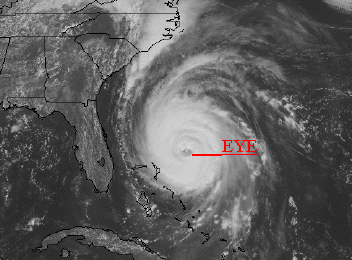FORMATION
BEHIND THE CATASTROPHE
Hurricanes develop from belts of low pressure where the trade winds are. On certain
occasions, these easterly waves form into tropical depressions, which are groups of
thunderstorms with winds of up to 30 mph. Under the right circumstances, they develop into
tropical storms, with winds of up to 73 mph. A hurricane is any tropical storm of wind
speeds higher than that.
The fuel that powers a hurricane comes from condensation of water vapor. Thunderstorms can
produce up to ten inches of rain per day, and thus produce an incredible amount of energy,
up to 2.4 x 1012
kW/h per day on average.

Initially, a hurricane's forward movement is very slow (~15 mph), but as it gets further from the equator, it can reach speeds of up to 60 mph near the middle latitudes. Though the hurricane gains speed as it moves away from the equator, it will also begin to die. Eventually it will lose its source of power (ie. water vapour condensation) as it passes over land. Hurricanes typically live for a period of 5 to 10 days.

